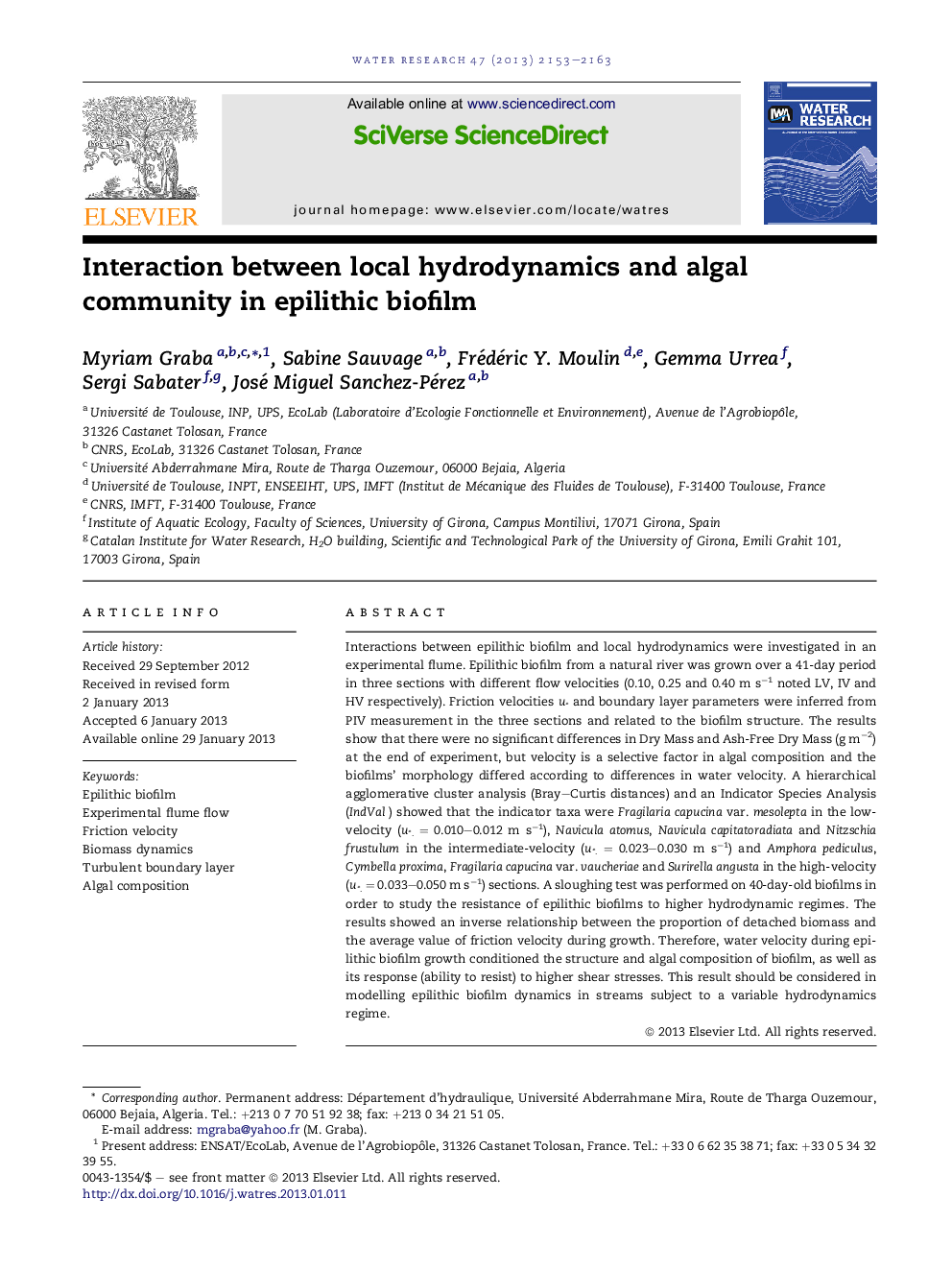| Article ID | Journal | Published Year | Pages | File Type |
|---|---|---|---|---|
| 4482268 | Water Research | 2013 | 11 Pages |
Interactions between epilithic biofilm and local hydrodynamics were investigated in an experimental flume. Epilithic biofilm from a natural river was grown over a 41-day period in three sections with different flow velocities (0.10, 0.25 and 0.40 m s−1 noted LV, IV and HV respectively). Friction velocities u* and boundary layer parameters were inferred from PIV measurement in the three sections and related to the biofilm structure. The results show that there were no significant differences in Dry Mass and Ash-Free Dry Mass (g m−2) at the end of experiment, but velocity is a selective factor in algal composition and the biofilms' morphology differed according to differences in water velocity. A hierarchical agglomerative cluster analysis (Bray–Curtis distances) and an Indicator Species Analysis (IndVal) showed that the indicator taxa were Fragilaria capucina var. mesolepta in the low-velocity (u*. = 0.010–0.012 m s−1), Navicula atomus, Navicula capitatoradiata and Nitzschia frustulum in the intermediate-velocity (u*. = 0.023–0.030 m s−1) and Amphora pediculus, Cymbella proxima, Fragilaria capucina var. vaucheriae and Surirella angusta in the high-velocity (u*. = 0.033–0.050 m s−1) sections. A sloughing test was performed on 40-day-old biofilms in order to study the resistance of epilithic biofilms to higher hydrodynamic regimes. The results showed an inverse relationship between the proportion of detached biomass and the average value of friction velocity during growth. Therefore, water velocity during epilithic biofilm growth conditioned the structure and algal composition of biofilm, as well as its response (ability to resist) to higher shear stresses. This result should be considered in modelling epilithic biofilm dynamics in streams subject to a variable hydrodynamics regime.
► Local hydrodynamic interactions with biofilm dynamics and structure were studied. ► A sloughing test was performed on biofilms grown in different hydrodynamic conditions. ► No significant differences on Dry Mass and Ash-Free Dry Mass at the end of experiment. ► Indicator species analysis shows species discrimination in relation to local flow. ► Detached biomass is inversely proportional to friction velocity during growth.
